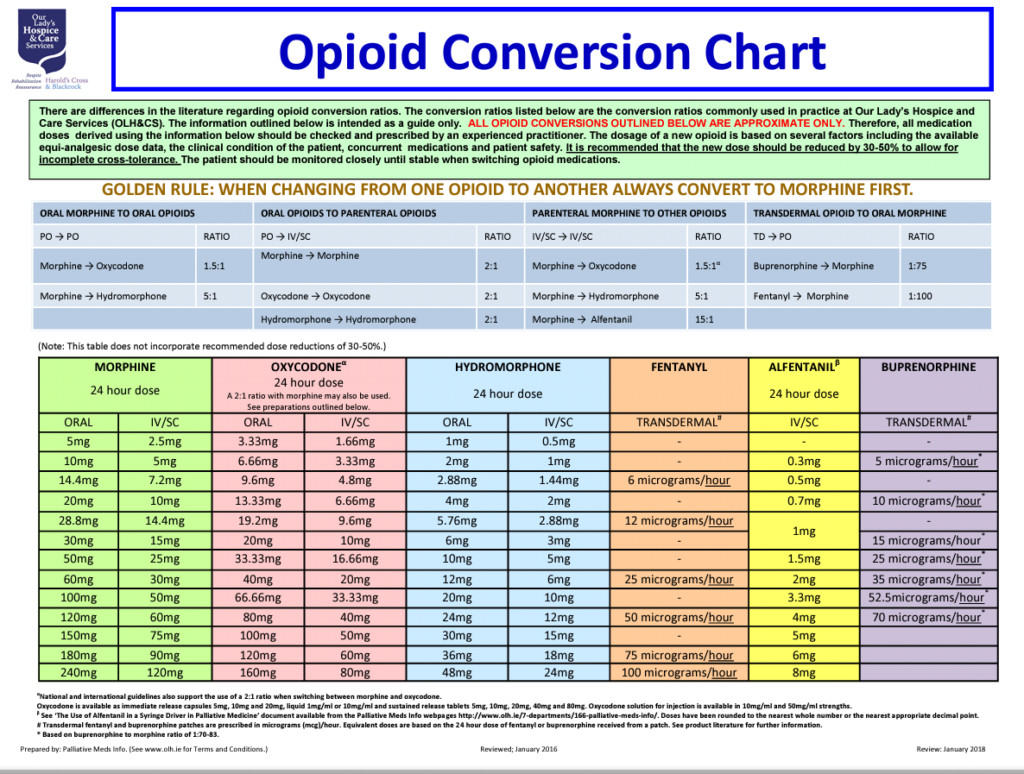Several opioids are used in palliative care settings, opioids also differ in several ways including their potency, onset, and duration of action. The choice of opioid and the route of delivery is dependent on the specific patient’s situation. It may be necessary to convert from one opioid to another or to move from one delivery system to another when a patient’s symptoms or location change over the course of therapy. Opioid dose conversion is an integral part of palliative care services.
Though several such conversion charts exist, they generally lack simplicity and uniformity in their ease of use across the spectrum of palliative care professionals. Clinicians often rely on published opioid analgesic conversion tables to convert between opioids or administration routes for patients with chronic pain. Sources of conversion tables include Full Prescribing Information (FPI) for a specific product, or clinical guidelines promulgated by learned societies or government entities.
Many medical professionals use smartphone applications (apps) on a daily basis to support clinical decision making including opioid conversion. However, a recent study which compared the reliability of smartphone Apps for Opioid Conversion raised doubts about the accuracy and reliability of apps in opioid switching conversion due to lack of robust regulation and peer review. In this piece, we have presented PDF files of government approved and professional bodies opioid conversion templates, charts, tips and guides.
GOLDEN RULE: WHEN CHANGING FROM ONE OPIOID TO ANOTHER ALWAYS CONVERT TO MORPHINE FIRST
Click on this links to download appropriate opioid conversion templates or charts,
American Society of Health System Pharmacist Opioid dose conversion
Opioid Conversion Guide Government of Australia
Opioid Conversion tips and charts University of Colorado
Equianalgesic Dosing of Opioids for Pain Management
Opioid Conversion Chart Harolds Cross
SEE: Opioid Risk Assessment Tool





